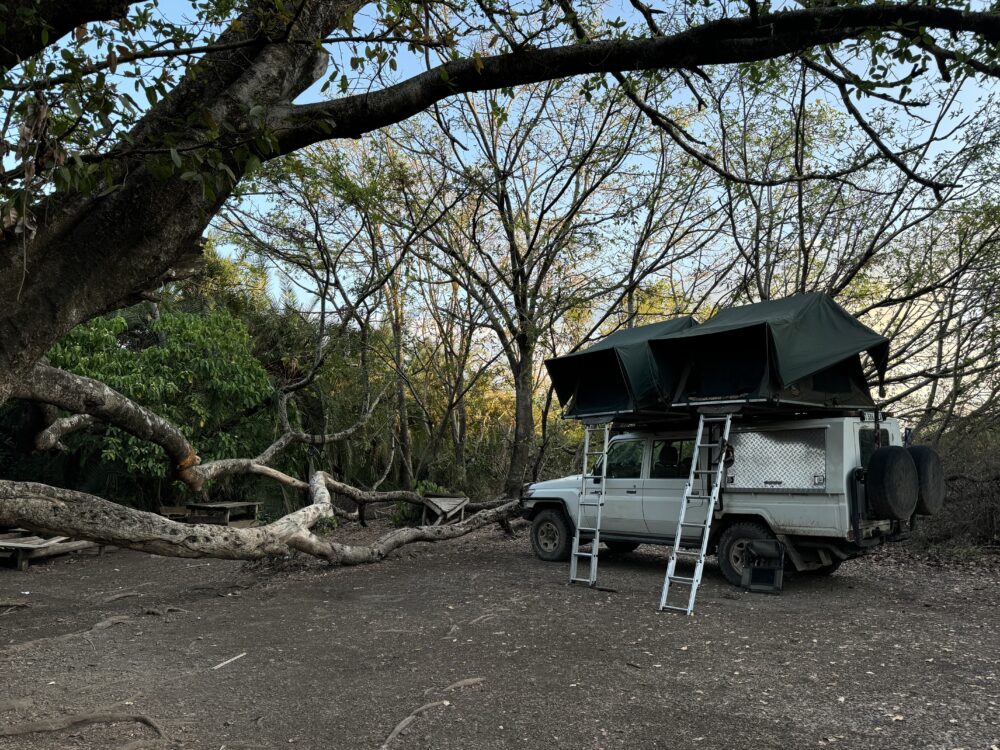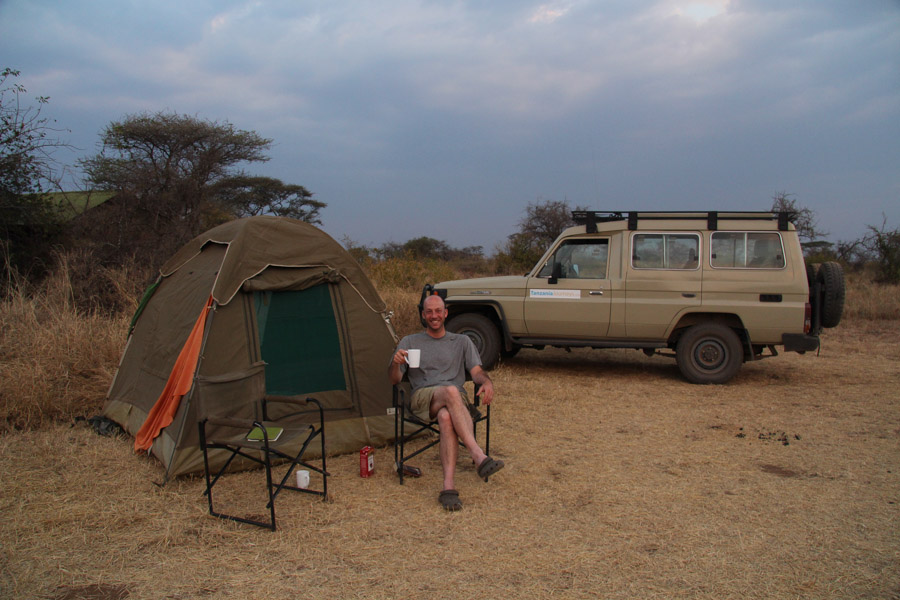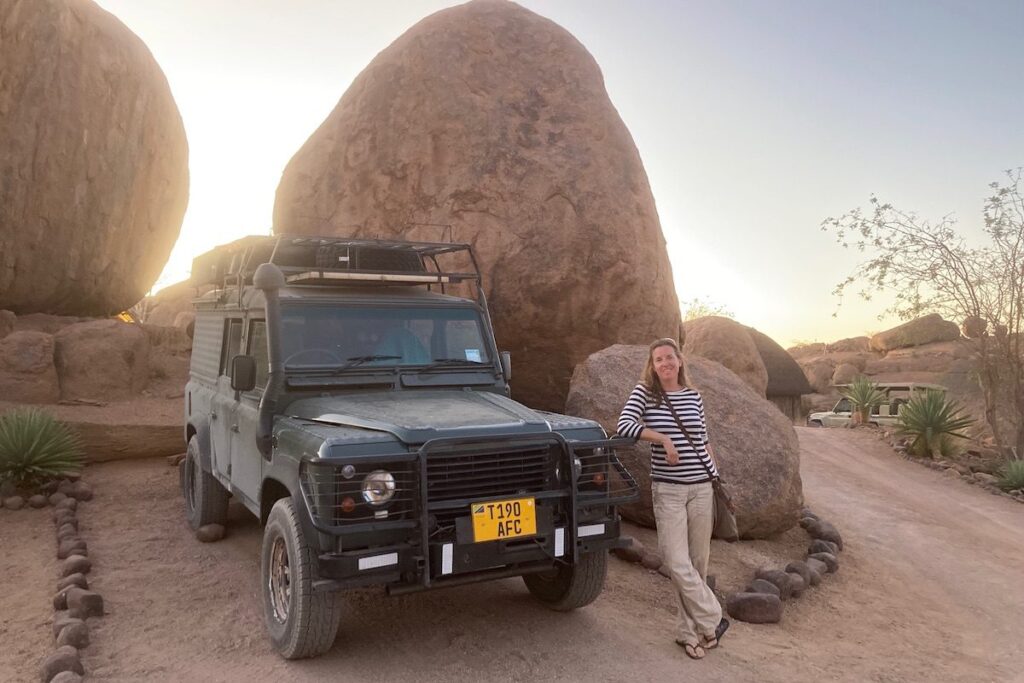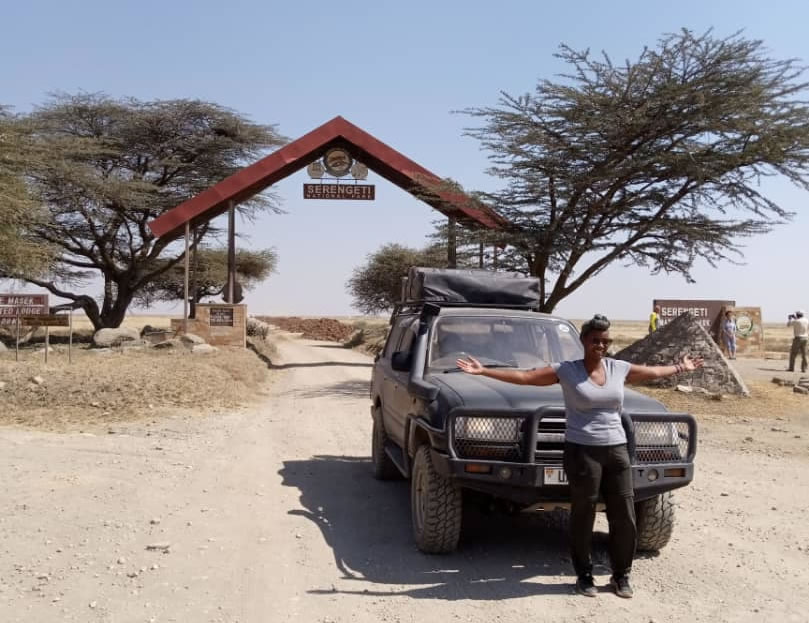Self Drive Safaris in Serengeti National Park
Self drive safaris in Serengeti National Park Safari is a 4×4 self-drive expedition in Tanzania’s renowned Serengeti, allowing you the Self drive to traverse expansive plains, observe The Big Five, and immerse yourself in Africa’s untamed splendor at your leisure. Budget-conscious tourists experience adventure and freedom by self-driving in a rugged 4×4, typically a Toyota Land Cruiser, allowing them to camp under wide starry sky at their discretion. You will lack a guide radio or continuous dialogue from the safari vehicle, yet you will possess unencumbered independence and solitude. A 4×4 self-drive safari in Serengeti National Park necessitates careful planning due to the rugged roads; yet, the rewards are substantial: you may create your own itinerary, pause for wildlife photography at your discretion, and camp amidst genuinely untamed scenery. A 4×4 Rooftop Tent or a 4×4 Pop-Up camper integrates transportation and lodging, circumventing costly accommodations while remaining in the heart of the activity. Arusha Car Rental offers a 4×4 self-drive Land Cruiser equipped with a rooftop tent for your 4×4 Self-Drive Safari in Serengeti National Park, enabling you to stay deep within the Serengeti wilderness with all necessary equipment included.
Self drive safaris Highlights in Serengeti National Park Safari
The Serengeti is a remarkable wildlife sanctuary. This 15,000 km² World Heritage site is abundant in biodiversity: The Park is home to 2 million ungulates, more than 4,000 lions, 1,000 leopards, 550 cheetahs, and numerous bird species traversing the plains.
The focal point is The Great Wildebeest Migration, including millions of wildebeest and zebras migrating in a circular pattern in response to rainfall. This live broadcast of the “greatest show on Earth” is remarkable. No location on Earth offers this volume of large game.
The Big Five and beyond. The Big Five—lions, elephants, buffaloes, leopards, and rhinoceroses—are present, excluding the highly endangered and exceedingly rare black rhinoceros. Wild canines, hyenas, giraffes, hippopotamuses, and extensive herds of antelope (wildebeest, zebras, gazelles) are plentiful. Hippos can be observed relaxing in river pools, while crocodiles are found around the canals.
Diverse scenery. The Southern Serengeti Plains (Ndutu/Seronera) are renowned for calving, often occurring from January to March. Expansive grasslands including sporadic “kopjes,” which serve as resting areas for lions amid rocky formations, in Central Serengeti. Increased forested terrain in the Western Corridor (Grumeti). Gallery woods and the Mara River in the Northern Serengeti (Lobo/Mara region) serve as optimal crossing zones, particularly from July to October.
Exquisite vistas. Expansive golden fields extending to the horizon. Sunrises and sunsets over savannahs are legendary. The park’s name translates to “Endless Plains” in Maasai. Be prepared for stunning landscapes. A hot-air balloon ride offers a panoramic perspective of this movement. The Serengeti teems with vitality: A lion cub investigates the meadows in the foreground. The park is resplendent with wildlife, with large felines, wildebeest herds, and giraffes grazing on the horizon.

Selecting Your 4×4 Safari Vehicle for self drive in Serengeti National Park.
The selection of your vehicle is significant. The majority of individuals lease a 4×4 SUV designed for off-road resilience and substantial capacities. The optimal choice is a 4×4 Toyota Land Cruiser. They navigate rugged terrain and substantial weights; they typically possess dual fuel tanks (for extended travel), snorkels, and reinforced suspension systems. Most are equipped with pop-top tops for standing and photographing or roof racks for tents. Extended Land Cruisers are favored for their elevated clearance, robust springs, and factory-installed pop-top roofs designed expressly for safaris.
Alternative choices include compact 4×4 crossovers (e.g., Drone Vans, RAV4) equipped with camping gear. A mid-sized 4×4 equipped with a rooftop tent and camping equipment represents another economical alternative.
These provisions offer sleeping accommodations and culinary apparatus onboard. Select a car that is equipped with two spare tires, a jack, and an additional fuel canister. Top-of-tent and pop-up camper hoods are strongly endorsed as they transform your truck into a mobile bedroom, reducing housing expenses.
Recommendation: Engage the services of Arusha Car Rental, which offers 24/7 roadside assistance. Our vehicles are insured. Travel at a reduced speed of 25–30 km/h on uneven roads to ensure safety. Experiencing a rollover during your 4×4 self-drive. A safari in Serengeti National Park is commonplace – We recommend, “Drive slowly or you will lose control.”
4x4 Toyota Rav4 ( Car Rental Arusha)
Toyota Land Cruiser with Double Roof Top Tent
Toyota Land Cruiser Gx Single Roof Top Tent
Toyota Land Cruiser Prado with Roof Top Tent
The 4x4 Toyota Land Cruiser LX
4×4 Toyota Land Cruiser Hardtop
Selecting Your 4×4 Safari Vehicle for Self Drive Safaris
The selection of your vehicle is significant. The majority of individuals lease a 4×4 SUV designed for off-road resilience and substantial capabilities. The optimal choice is a 4×4 Toyota Land Cruiser. They navigate rugged terrain and substantial weights; they typically possess dual fuel tanks (for extended journeys), snorkels, and reinforced suspension systems. Most are equipped with pop-top tops for standing and photographing or roof racks for tents. Extended Land Cruisers, for instance, are favored due to their elevated clearance, robust springs, and factory-installed pop-top canopies designed expressly for safaris.
Alternative choices may include compact 4×4 crossovers (e.g., Drone Vans, RAV4) equipped with camping apparatus. A mid-sized 4×4 equipped with a rooftop tent and camping equipment represents another economical choice.
These provisions provide sleeping accommodations and culinary apparatus onboard. Select a car that is equipped with two spare tires, a jack, and an additional fuel canister. Top-of-tent and pop-up camper hoods are strongly endorsed as they transform your truck into a portable bedroom, resulting in reduced housing expenses.
Recommendation: Engage the services of Arusha Car Rental, which offers 24/7 roadside assistance. Our vehicles are insured. Please drive cautiously at 25–30 km/h on uneven roads to ensure safety.
Costs and Charges: Vehicle Rental and Park Entry for your 4×4 Self-Drive Serengeti Experience
Travelers ought to allocate their finances judiciously. Approximate essential charges: 4×4 rentals range from approximately $150 to $200 per day for a properly equipped 4×4 Land Cruiser.
More expensive models and extended rentals may exceed $250. Our car rentals include basic insurance but do not cover fuel. Cheaper vehicles such as the RAV4 or Toyota Prado can be rented for roughly $60–100 per day, albeit with reduced ground clearance. Roof-top tents or camping equipment typically incur an additional charge (about $20–30 per day). Compare options; nevertheless, inexpensive local deals may sacrifice reliability or round-the-clock assistance.
Fuel: Our vehicles offer a range of around 300–500 km per day, at a cost of approximately $1.10 per liter (4,000 TSH per liter). Refuel at town fill stations (Arusha, Karatu, Lobo) throughout the morning hours.
Park Entrance Fees: During high season (May–March), foreign adults are charged approximately $70 per person per day, whereas the fee is $60 during low season. Individuals under 15 years of age are charged approximately $20, while those under 5 years are admitted free of charge.
These require payment in dollars or a card accepted at the park entrances. Tanzania imposes an 18% VAT, resulting in a total above $82 inclusive of tax.
Vehicle Permit: In addition to individual payments, a vehicle entry permit (TANAPA Road Permit) is required, costing approximately $20 per day for a 4×4 vehicle (such as a Rav4 or Land Cruiser). Smaller cars incur a tax of $10. This permit allows for multiple entries into the park on the same day. Concession cost (for on-site accommodations): If you are camping or residing in a public campsite or lodge within the park, an additional “concession fee” of around $60 per adult per night applies during peak periods.
Certain resorts incorporate this fee into their cost, whilst public campgrounds impose it at the entrance.
Additional Services: You may employ an individual to accompany you as a park ranger in your vehicle for animal observation (Approximately $25 per day).
Private car radio contact is nonexistent, hence a ranger can enhance sightings. Camping chairs, cooking equipment, and food incur additional fees (either rental or personal provision). Additionally, incorporate bottled drinks, food, and gratuities for supplementary services.
Guidelines for a 4×4 Self-Drive Safari in Serengeti National Park
Navigation and Planning: Acquire offline maps (e.g., Maps.me, GaiaGPS) featuring Serengeti highways, as mobile reception is inconsistent. The park features signage at important intersections; nonetheless, an offline application is helpful for navigating lesser-known paths. Chart your course in advance, yet be adaptable. The distances are enormous. Google frequently underestimates travel durations in the Serengeti; for instance, the journey from Arusha to central Seronera may require 9 to 10 hours via Ngorongoro. Refuel in Arusha or Karatu, the final substantial town prior to entering the Serengeti, as fuel availability within the park is restricted. Procure food, water, and park permits in Arusha/Karatu, if feasible.
Necessary Equipment: Ensure an ample supply of water and provisions – a minimum of 5–10 liters of water per individual each day.
Prepare a first-aid kit, sunscreen, bug repellant, thick clothing (as temperatures may drop at night), and rain gear (since roads can become muddy rapidly if it rains). Bring a reliable headlamp or flashlight. It is prudent to include essential tools (jack, tire repair kit, air compressor) and a satellite phone, if accessible.
Driving Safety: Operate vehicles exclusively during designated hours (6 AM – 6 PM)
Driving at night is prohibited and exceedingly hazardous due to wildlife on the roadways. Stay on designated roads — off-roading may incur substantial penalties.
Adhere to speed limits (about 40 km/h). Indeed, 90% of accidents in the Serengeti are attributable to excessive speed.
Wild animals possess the right of way; if you encounter a herd crossing, yield and allow them to pass. Stop your vehicle when seeing wildlife, deactivate the motor, and maintain distance from others.
Do not attempt to feed or disturb wildlife. Refrain from approaching huge animals, particularly elephants and buffalo, for safety considerations. Avoid honking or flashing headlights at animals, as it induces fear. Exercise extreme caution when navigating in proximity to leopards and lions, since they have been observed to chase automobiles. Avoid littering, as even banana peels can adversely affect the environment.
Emergency Preparedness: We offer a local contact or a 24/7 telephone line. If you experience a breakdown, stay with the vehicle until help arrives. It may require several hours. Secure your vehicle overnight at campsites and obscure valuables.
Remain Informed: Monitor meteorological and migratory forecasts. The Serengeti undergoes two short wet seasons (November to December, March to May), resulting in saturated trails. Optimal wildlife observation typically occurs following precipitation. Utilize applications to monitor the location of the animals. When tracking The Great Migration, be aware that river crossings shift; engage local guides or utilize applications like IOverlander for assistance.
Possible Routes to use during Self Drive Safaris in Serengeti National Park
Naabi Hill Gate to Seronera (Central): This park’s “spine” is a road oriented east-west. Proceed from Naabi (south entrance) along the primary route through Gol/Simba Kopjes to Seronera. This road is typically congested yet abundant with wildlife, particularly near Seronera. The road is in poor condition, with an average speed of 25 km/h.
Seronera to Lobo (North): Proceed along the northern route from Seronera to reach Lobo. The journey entails an approximate 2-hour drive covering a distance of about 75 kilometers across open plains. Along the route, one can observe large felines, feral canines, and buffalo. This location is relatively quiet, and it is probable that you will not encounter another car for several hours.
Lobo → Klein’s Gate (Mara) or Kogatende: For migration monitoring (July–October), remain to the west/north from Lobo towards the Mara River area (Kogatende). The journey from Lobo to the river requires approximately 2.5 hours. The exits are Fish Eagle Gate and Klein’s Gate. Except for migration, the northern region remains suitable for elephants and baboons, and is pleasant.
The Southern Circuits: S in the south (Ndutu/Ngiri), a route from Seronera to the Ngorongoro Conservation Area via Ndutu is available. This includes the Serengeti Plains and Lamai Wedge if you proceed northward.
Grumeti (Western Corridor): For an authentic diversion, access the western Serengeti and Grumeti Game Reserve from the west through the Ikorongo Gate via Mwanza road. The Serengeti river crossings (Grumeti River) that garnered media attention occur around May to June. It is highly isolated and should be undertaken with local expertise.
The central Serengeti (Seronera) is the most accessible and abundant in animals. North and




